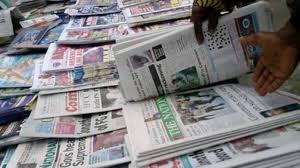News
US Inflation: Consumer prices rise 6% over last year in February, slowest since Sept. 2021
US inflation showed continued signs of cooling off in February but remained stubbornly high and well above the Federal Reserve‘s 2% target in the year’s second month, according to the latest data from the Bureau of Labor Statistics released Tuesday morning.
The Consumer Price Index (CPI) revealed headline inflation rose 0.4% over last month and 6% over the prior year in February, a slowdown from January’s 0.5% month-over-month increase and 6.4% annual gain. Both measures were in-line with economist expectations, according to data from Bloomberg.
The 6% jump in inflation marks the slowest annual increase in consumer prices since September 2021.
“Core” inflation, which strips out the more volatile costs of food and energy, rose 0.5% over the prior month in February and 5.5% over last year, marking the smallest 12-month increase since December 2021. Economists had estimated “core” inflation would rise 0.4% on a month-over-month basis and increase 5.5% compared to February 2022.
“The 0.5% [month-over-month] rise in core consumer prices last month adds to the evidence that inflation remains stubbornly high, but the ongoing fallout from the SVB crisis over the coming days is still likely to have a bigger bearing on what happens at next week’s FOMC meeting,” wrote Andrew Hunter, deputy chief U.S. economist at Capital Economics, in a note on Tuesday.
U.S. stocks surged following the release of the data, and Treasury yields moved higher. Tuesday’s inflation data also comes against the backdrop of the stunning collapse of Silicon Valley Bank last week, which had pared expectations for the Fed’s next move with markets now pricing in a 25 basis point, or 0.25%, rate hike later this month.
The energy index increased 5.2% for the 12 months ending February, while the food index increased 9.5% over the last year. The energy index dropped 0.6% from January to February, led by a 7.9% drop in the price of fuel oil. Gas prices rose 1.7% over last month in February but fell 2% from the same month last year.
The shelter category of CPI rose 8.1% over the last year, accounting for over 60% of the total increase in “core” inflation.
Food costs continued to rise in February, with the food index rising 0.4% over last month. The food at home index rose 0.3% over last month as five of the six major grocery store food group indexes increased over the month, the BLS noted. Egg prices fell 6.7% in February.
‘Financial stability dilemma’
Last week, investors placed a better-than-50% chance on the Fed raising rates by 50 basis points this month following two days of testimony from Fed Chair Jerome Powell that emphasized interest rates were likely to go higher than previously forecast.
Developments from the banking sector over the last week have changed this outlook with some Wall Street analysts surmising the recent failure of Silicon Valley Bank (SIVB), and the risk of stoking financial instability, will alter the Federal Reserve’s plans.
“February inflation data probably doesn’t ease or complicate the Fed’s price stability versus financial stability dilemma,” Seema Shah, chief global strategist at Principal Asset Management, wrote in reaction to Tuesday’s report.
The Fed, which has a current benchmark interest rate target of 4.5%-4.75%, has hiked rates by a cumulative 4.5% over the past year in an effort to quell inflation. Consumer prices peaked last summer, hitting a roughly 40-year high of 9.1%.
“The February consumer price index doesn’t alter our call for a 25 bps rate hike at the next FOMC meeting,” wrote Ryan Sweet, chief U.S. economist at Oxford Economics, in a note on Tuesday. “Though stress has spiked in the banking system, the Fed is still highly focused on taming inflation. …We believe the Fed will continue to raise interest rates to cool the economy and take the edge off inflation.”
-Yahoo Finance.


 News23 hours ago
News23 hours agoFG Announces Commencement Of Loan Scheme For All Nigerians (See How To Apply)

 Top Stories21 hours ago
Top Stories21 hours agoBreaking: Another Wike’s Loyalist Rejects Fubara’s Redeployment, Exit From Cabinet

 Top Stories23 hours ago
Top Stories23 hours agoBreaking: Multichoice Hikes Subscription Prices On DSTV, GOTV

 Business and Brands23 hours ago
Business and Brands23 hours agoLabour Union Demands ₦350,000 As New Minimum Wage

 News7 hours ago
News7 hours agoBlack Market Dollar (USD) To Naira (NGN) Exchange Rate Today 25th April 2024

 News7 hours ago
News7 hours agoTop Nigerian Newspaper Headlines For Today, Thursday, 25th April, 2024

 Entertainment6 hours ago
Entertainment6 hours agoTransfer: Iheanacho tipped reportedly leaving Leicester City this summer

 Politics3 hours ago
Politics3 hours agoBreaking: 118 Inmates Escape As Rainstorm Wreaks Havoc At Suleja Prison







